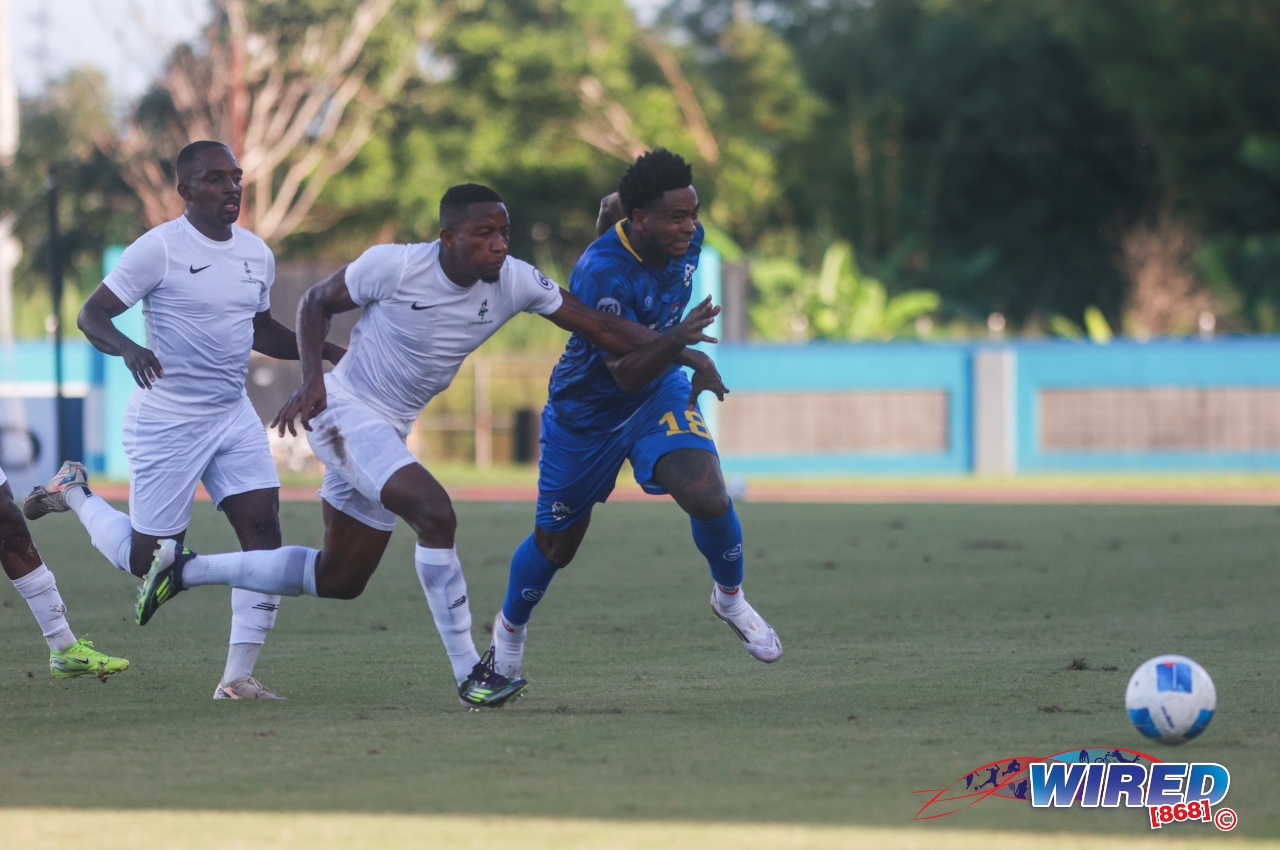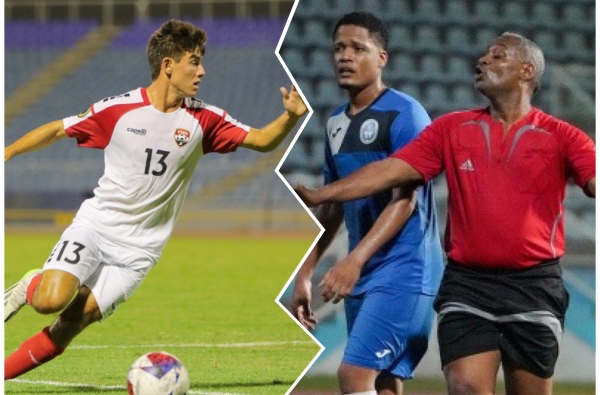“[…] Osgood-Schlatter Disease (OSD) is an overuse injury that affects the tibial tuberosity, which is the small bump just below the kneecap where the patellar tendon of the quadriceps muscles attaches to the shinbone.
“It’s most common in children and teens between 10 and 15 years old, during periods of rapid growth. OSD often affects those involved in sports that require a lot of running, jumping, and quick direction changes—such as football, basketball, athletics, and netball…”
The following guest column on Osgood-Schlatter Disease (OSD) was submitted to Wired868 by Dr Kerry Dollaway, programme leader at the UTT Centre for Kinesiology, Physical Education and Sport (CKPES), and Kyle Hannays, instructor II at CKPES:

If your child or young athlete has ever complained of pain just below the knee after a game or training session, it might be more than just growing pains.
It could be a condition called Osgood-Schlatter Disease (OSD), a common cause of knee pain in growing adolescents, especially those who are active in sports, experiencing a growth spurt or just experienced one.
Osgood-Schlatter Disease is an overuse injury that affects the tibial tuberosity, which is the small bump just below the kneecap where the patellar tendon of the quadriceps muscles attaches to the shinbone.
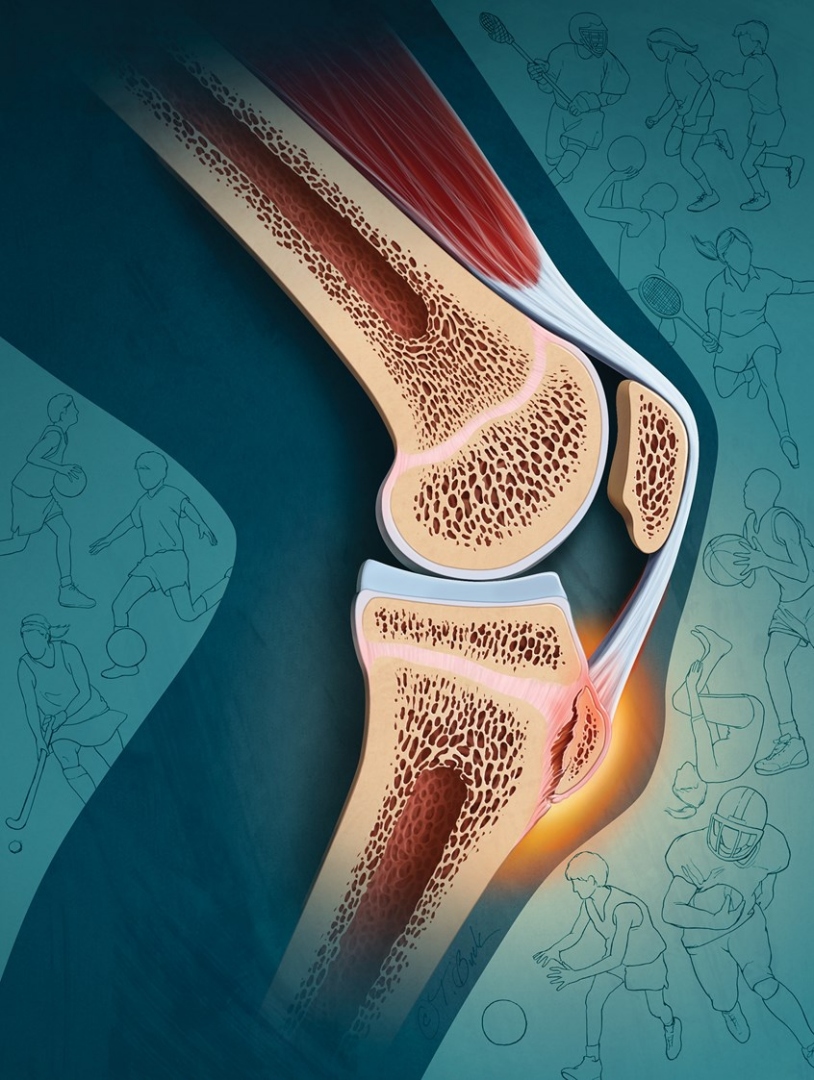
It’s most common in children and teens between 10 and 15 years old, during periods of rapid growth. OSD often affects those involved in sports that require a lot of running, jumping, and quick direction changes—such as football, basketball, athletics, and netball.
Who is at risk?
- Active children and adolescents are at, especially those playing sports more than three times a week.
- Boys and girls during growth spurts, although boys were historically more affected, the gap is closing with more girls in sport. (It must be noted that in my 15 years of practice, I have never encountered a girl with Osgood Schlatter’s disease.)
- Young athletes with tight thigh muscles (quadriceps).
- Those who do not warm up properly or have poor technique.
What Are the Symptoms?
- Pain and swelling just below the kneecap, especially after activity;
- A bony bump on the shinbone that becomes more prominent over time;
- Tenderness when kneeling, squatting, or jumping;
- Stiffness and tightness in the front of the thigh;
- The pain usually worsens with activity and eases with rest;
- When asked the location of the knee pain, the athlete will point directly to the tibial tuberosity.
Importantly, OSD does not affect the knee joint itself, and most children recover fully with time and proper care.
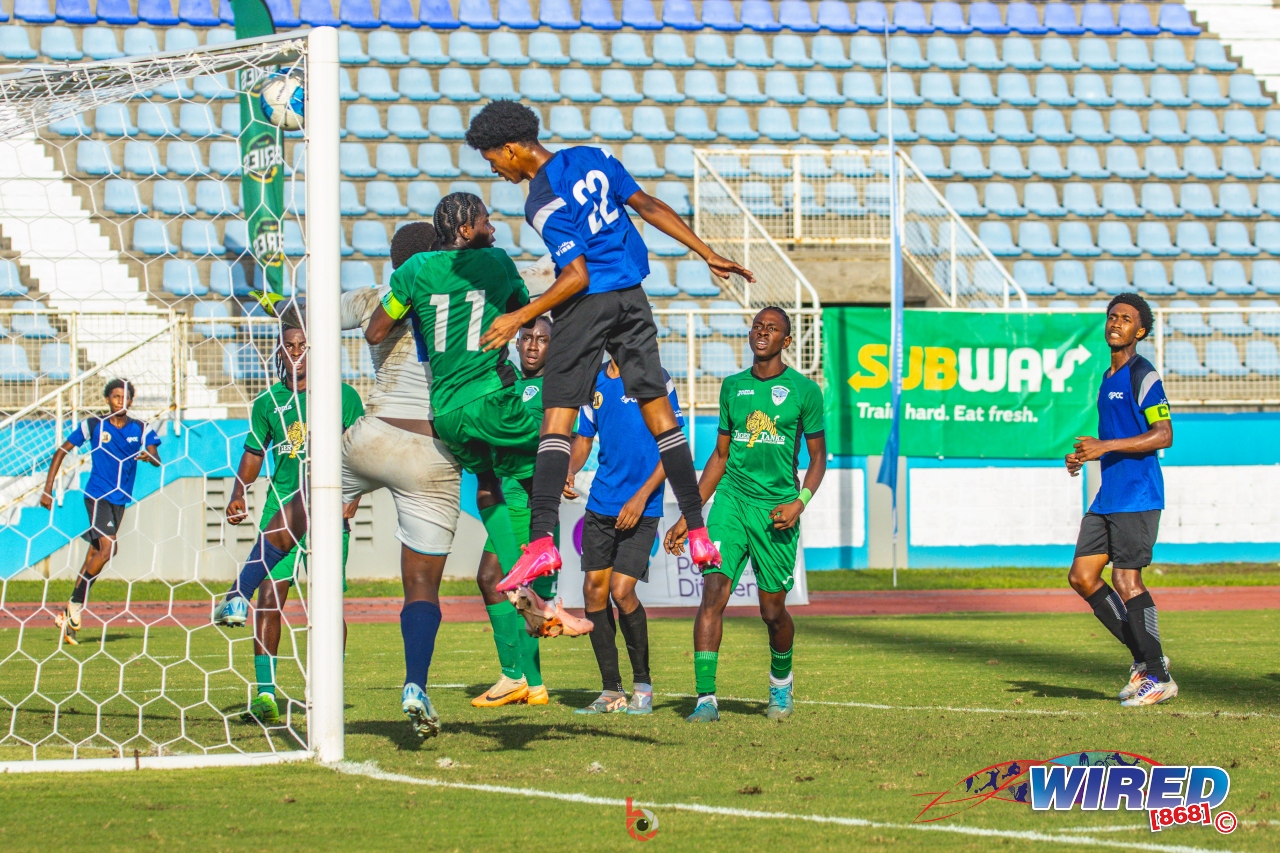
Photo: Dirk Allahar/ BCreative Designs/ Wired868.
A doctor, physiotherapist and/or athletic trainer can usually diagnose OSD based on a physical examination and a description of the symptoms. X-rays may be used to confirm the diagnosis, determine the extent of the injury and rule out other conditions.
There is no quick fix, however, OSD is very treatable. The key is managing the symptoms and modifying activities.
Here are some practical ways:
Rest and Modify Activity
- Avoid or reduce sports that aggravate the pain;
- Cross-train with low-impact activities like swimming or cycling;
- Temporary time off from sport is mandatory in moderate to severe cases.
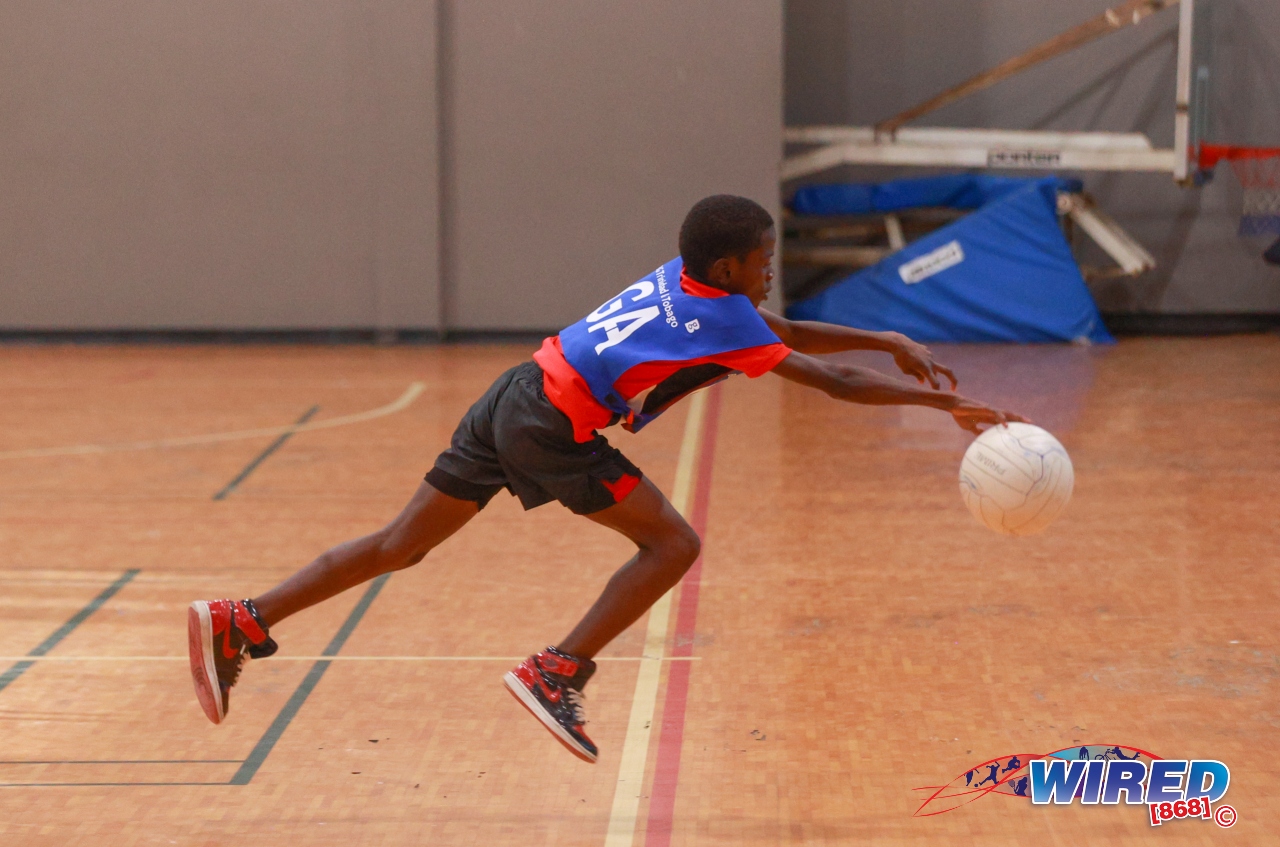
Photo: Nicholas Bhajan/ Wired868.
Ice the Knee
- Apply ice packs for 15–20 minutes after activity to reduce swelling.
Stretching and Strengthening
- Gentle quadriceps, iliopsoas (hip flexors), adductors (groin) and hamstring stretches are vital;
- Strengthening exercises can improve the stability of muscles that support the knee and improve form.
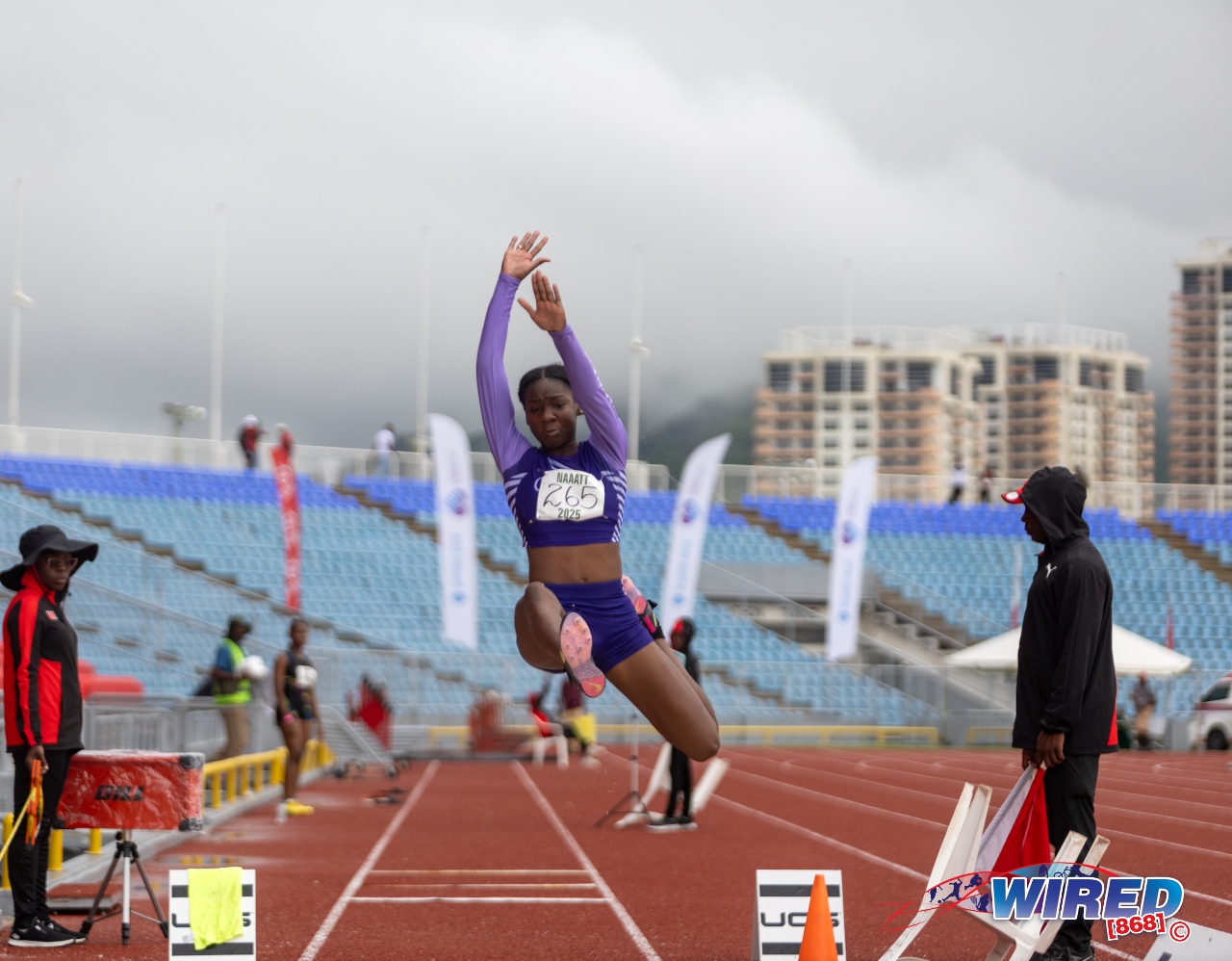
Photo: Johann Corneille/ Wired868.
Use of Knee Support
- A patellar tendon strap or knee brace may relieve pressure on the bone;
- Soft padding may help if kneeling is painful.
Pain Relief
Over-the-counter medications like ibuprofen or acetaminophen may help manage pain (always under adult supervision or with medical advice, since some adults may have allergic reactions to these medications).
Many athletes can continue to play with OSD with modifications, although this is not recommended since it can worsen. The condition typically resolves on its own once growth stops, usually around age 14–16.
It’s important to avoid pushing through the pain, as this can worsen the symptoms or lead to long-term issues. In some cases, surgery may be indicated to improve the outcome.
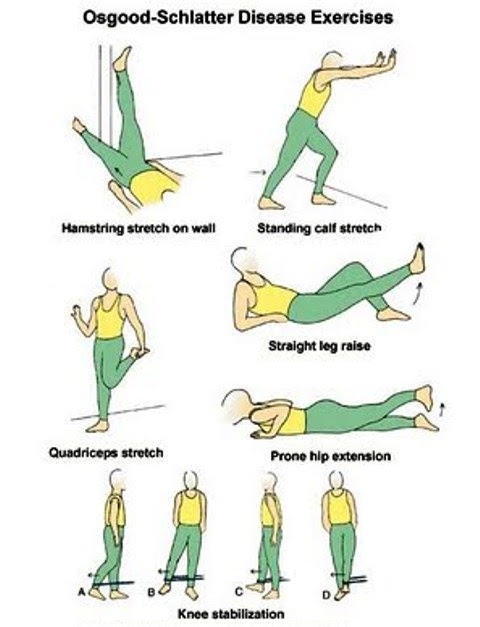
While you can’t prevent growth spurts, you can reduce the risk of OSD by:
- Ensuring young athletes warm up and cool down properly;
- Encouraging balanced training with rest days;
- Promoting good technique in sport-specific movements;
- Monitoring for signs of pain and acting early;
- Encourage athletes to report any pain or discomfort they may be experiencing;
- Pay close attention to athletes that are experiencing growth spurts.

Photo: Daniel Prentice/ Wired868
Osgood-Schlatter Disease is a common and manageable condition, but only if it’s recognized early and treated properly. With the right approach, young athletes can continue to enjoy sports while giving their growing bodies the care they need.
If you notice a child limping, rubbing below their knee, or complaining of pain after practice, don’t ignore it. Support them by seeking advice from a doctor, physiotherapist or athletic trainer.
Remember: rest today can mean stronger play tomorrow. Ignoring the signs and symptoms can allow OSD to worsen and lead to avulsion fractures of the tibial tuberosity, which is a tearing away of the bone.
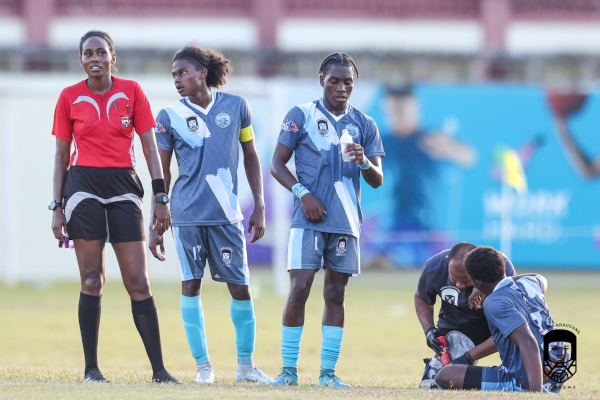
Looking on is referee Nathalya Williams.
Photo: Daniel Prentice/ Arima Araucans Academy.
For more information, speak to your family doctor, sport medicine physician, physiotherapist, athletic trainer or you may visit trusted health websites such as:
American Academy of Pediatrics – www.aap.org
Mayo Clinic – www.mayoclinic.org
Want to share your thoughts with Wired868? Email us at editor@wired868.com.
Please keep your letter between 300 to 600 words and be sure to read it over first for typos and punctuation.
We don’t publish anonymously unless there is a good reason, such as an obvious threat of harassment or job loss.
 Wired868 Wired868 for smart sport news and opinion
Wired868 Wired868 for smart sport news and opinion


